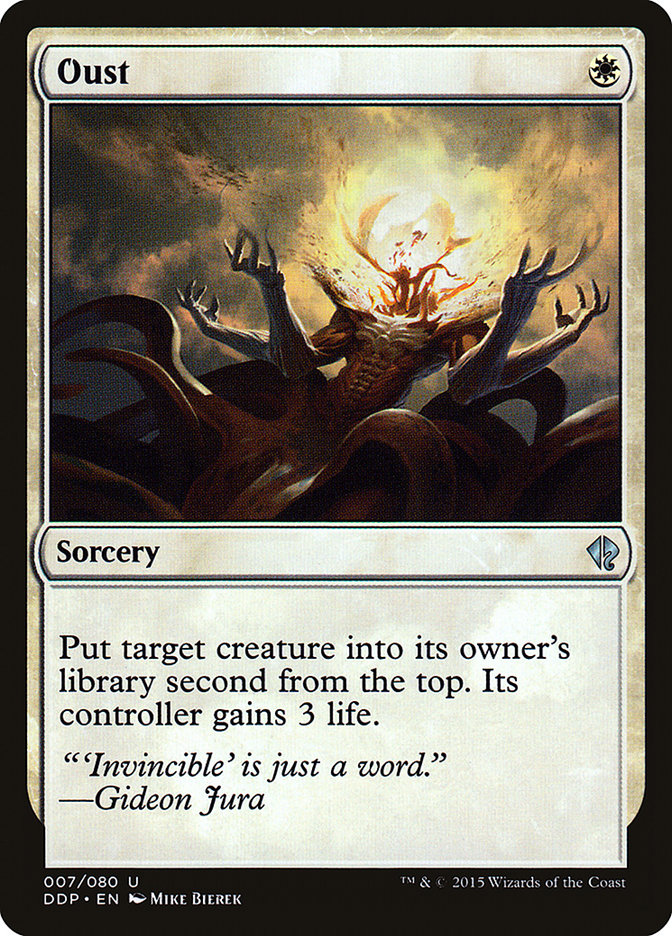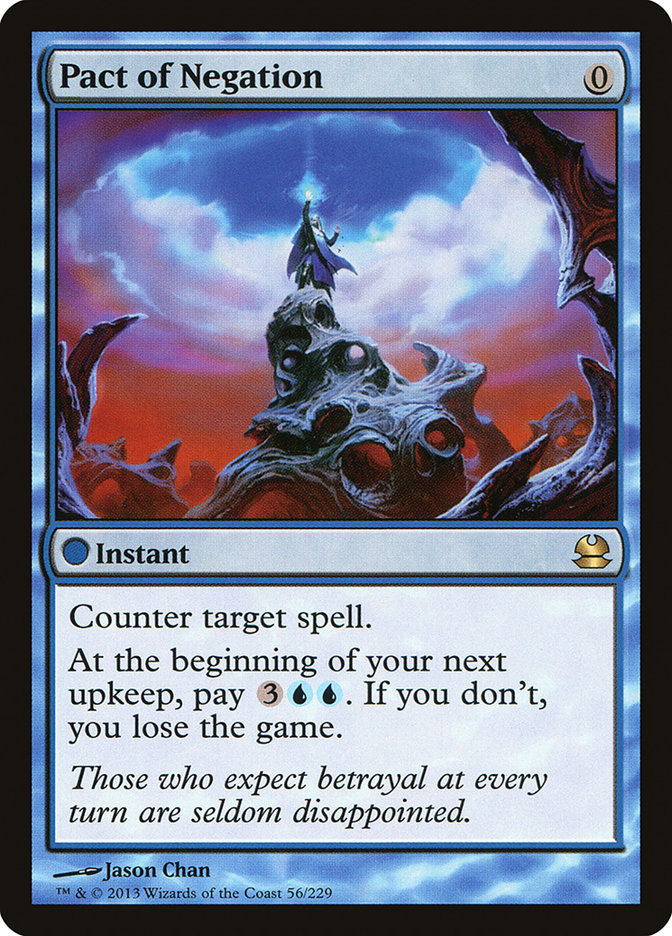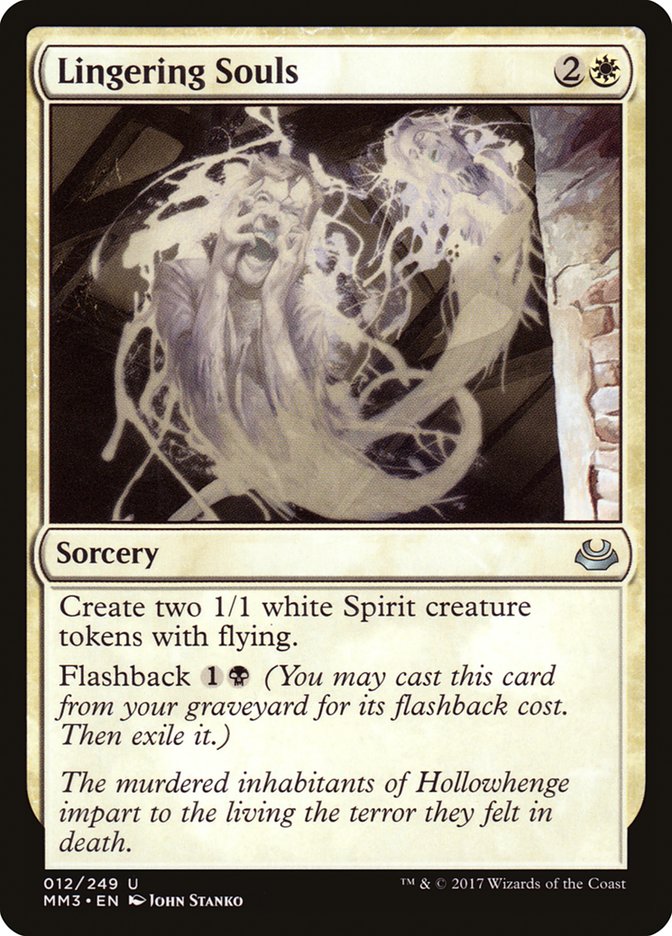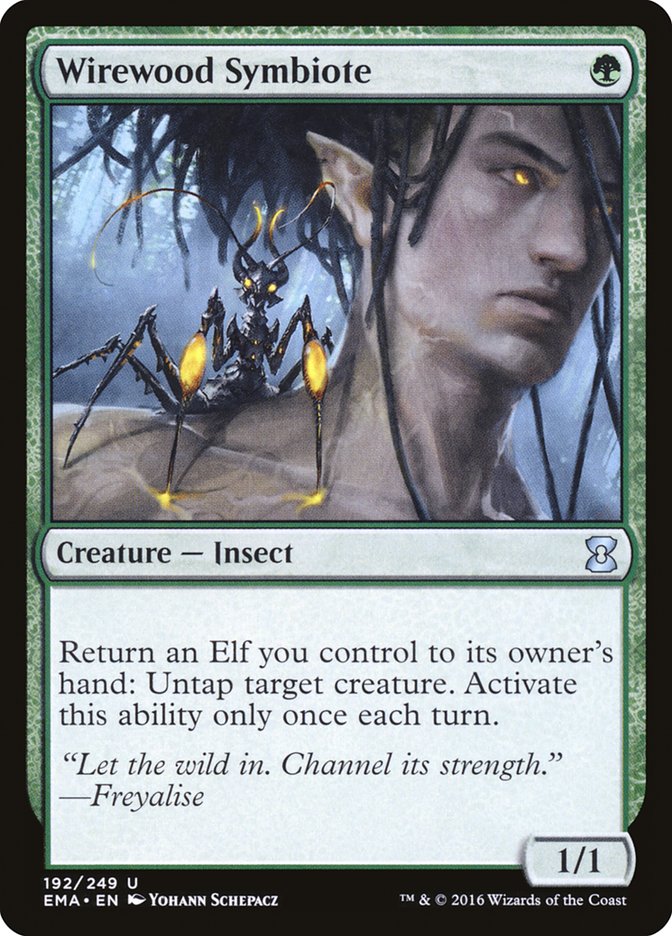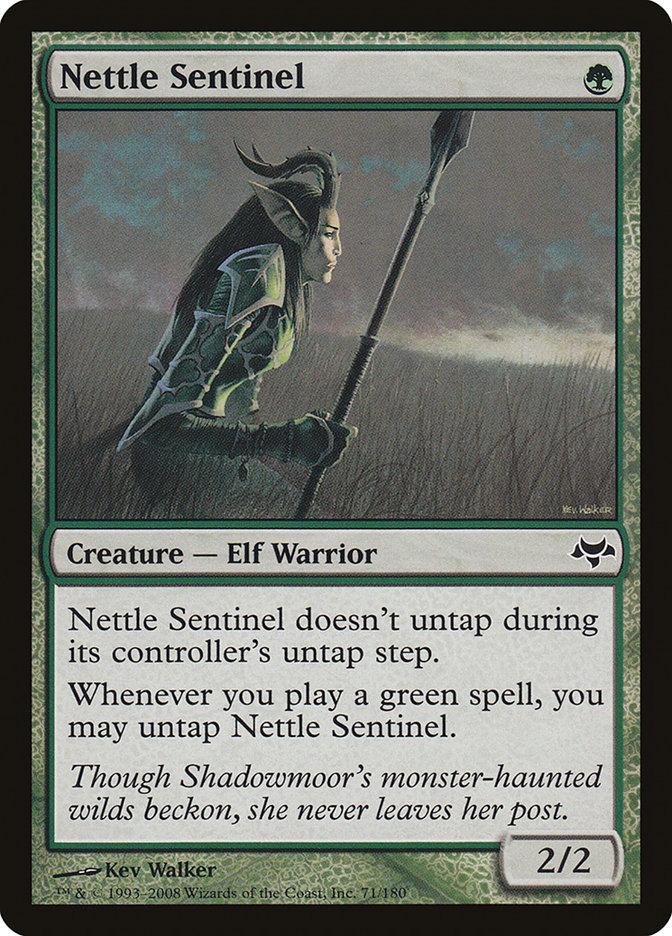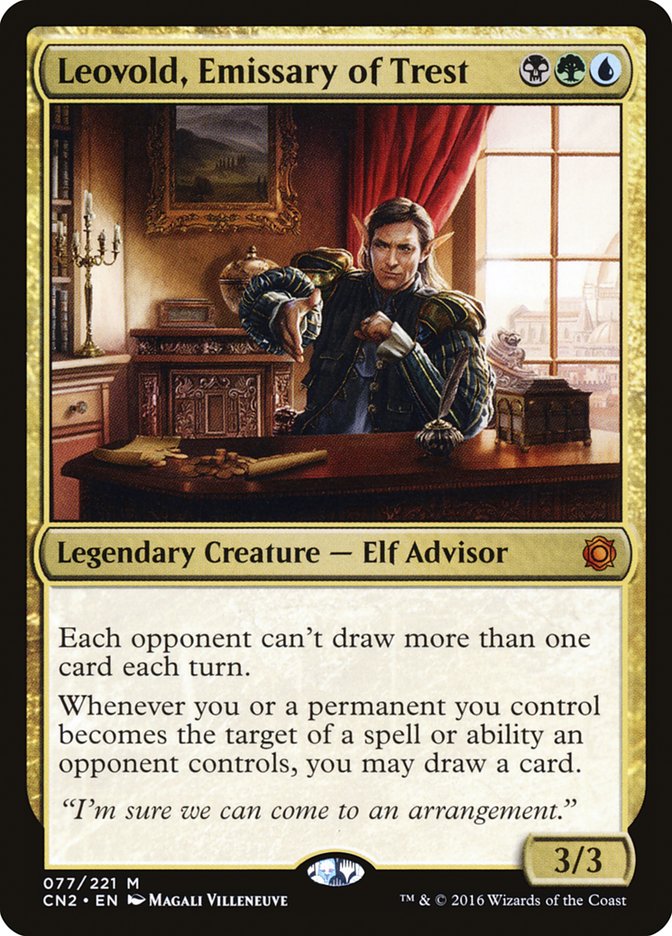I think it is safe to assume that most of us don’t enjoy playing “the best
deck” most of the time, myself included. Whether you just like expressing
yourself through your deck choice, or you just enjoy playing a different
strategy, you still have to know what the top deck(s) in a particular
format are. And, subsequently, you need to know how to attack them.
If you’re like me, you can be a little stubborn, often shying away from the
“best deck” even when you’re not entirely sure your brew can beat it. On
occasion, I fold a few days before the tournament and end up listening to
the Brad Nelsons of the Magic world, playing the best version of the best
deck, but that is not exactly common (maybe that’s why I’ve been doing so
bad lately!). So today, I’m not suggesting you play the best deck in the
format. After all, it is probably a mistake to do that in a team tournament
like
#SCGKY. If everyone is gunning for the best deck in each format, you don’t want a
giant target on all three of your decks. And when the formats are as open
and diverse as Modern and Legacy, playing public enemy number one can be
actively dangerous.
But we still need to know how to beat them.
So we’re going to go over what I think are the three best decks in the
three major Constructed formats for
#SCGKY
and what you should be looking to do if you want to beat them (while still
having game against the field, of course).
Standard
Ah yes, the elephant in the room.
(Not pictured: Gideon, Ally of Zendikar) https://t.co/zgfPjlcdc9
—
Aaron Forsythe (@mtgaaron) May 14,
2017
Actually, what is not pictured is their sense of overwhelming relief that
Gideon, Ally of Zendikar didn’t single-handedly ruin the Pro Tour after
many people thought it should have been banned alongside Felidar Guardian.
The problem with that thinking is that Aetherworks Marvel is actively more
frustrating to play against than the Felidar Guardian combo ever was. I’ve
long advocated for banning it for being so utterly powerful, efficient,
and…annoying. Other than the fact that you can cast all the big Eldrazi
and gain their special effects, the card is just too easy to get online.
For such an oppressive ability, six energy is a joke. That’s one
Woodweaver’s Puzzleknot. That’s two or three energy-generating cards that
are actively good on their own.
We’ve seen Aetherworks Marvel dominate Standard before in the hands of
Jacob Baugh and company before the release of Aether Revolt. It
took an even more powerful combo deck to oust it from the top spot, as well
as banning one of the best cards for the archetype.
So yeah, Gideon, Ally of Zendikar didn’t show up at the Pro Tour. Obviously
people did play it and Mardu Vehicles did swarm the tournament, but it
didn’t dominate like it has in the past. And maybe that counts as a win,
but that’s a pretty sad win if you ask me. The Pro Tour Top 8 featured
Zombies, Aetherworks Marvel, and one lone wolf B/G Energy deck. That
doesn’t exactly scream diversity, but at least it is better than the
two-deck format that we had before. But what I can say about the previous
Standard format is that Four-Color Saheeli and Mardu Vehicles made for some
interesting games. Aetherworks Marvel just doesn’t do that. Boring to
watch, boring to play against, and boring to play with.
I’m not advocating for another ban. Honestly, I don’t care enough at this
point. My guess is that we’ll live out their mistakes over the next four or
five months until Battle for Zendikar block (and Ulamog, the
Ceaseless Hunger) rotate out. But enough about that. Let’s talk shop. This
weekend’s
#SCGKY
is still going to be fun, and I’ll just touch on what you need to do to
make sure you can beat Aetherworks Marvel.
Are you ready?
Yeah, that’s right, just cross your fingers and hope they don’t hit Ulamog,
the Ceaseless Hunger. That’s it. No deck in the format can beat a cast
Ulamog, the Ceaseless Hunger on the fourth turn, so there is very little
reason to try. Sure, you can come with a control deck, but those are
probably going to get run over by Mardu Vehicles and Zombies. And honestly,
your control deck probably doesn’t win fast enough to beat a hard-cast
Ulamog, the Ceaseless Hunger. So whether you’re casting Aetherworks Marvel
yourself or playing one of the other viable archetypes, your best bet at
beating Aetherworks Marvel is hoping their deck fails in doing what it is
trying to do.
Sure, some discard spells like Transgress the Mind or splashing blue for
Metallic Rebuke in Mardu Vehicles could do the trick. But I watched
Christian Calcano cast two (two!) copies of Lost Legacy against the deck
and still lose. I’ve personally cast Dispossess against Kevin Jones, taking
away his Aetherworks Marvel (before he cast it on Turn 4) with a clock in
play, and still ended up losing to Whirler Virtuoso.
Their deck is resilient to disruption. No one thing is going to beat them.
You need to be consistent, have a fast clock, and play a disruption spell
or two. And even then, you can still lose. That in and of itself should be
a clue that you should likely just play Aetherworks Marvel yourself, but
that just doesn’t sound like very much fun. You’re just spinning the top
six cards of your deck in the mirror, hoping you hit Ulamog, the Ceaseless
Hunger before they do. But if you do play Aetherworks Marvel, I’d probably
lean toward Yuuya Watanabe’s list.
Creatures (10)
Lands (15)
Spells (35)
- 5 Forest
- 1 Mountain
- 1 Island
- 1 Negate
- 1 Kozilek's Return
- 4 Aetherworks Marvel
- 4 Woodweaver's Puzzleknot
- 4 Harnessed Lightning
- 4 Attune with Aether
- 4 Glimmer of Genius
- 3 Dissenter's Deliverance
- 3 Censor
Sideboard

Alright, enough. Let’s get to the good stuff.
Modern
While Modern hasn’t had much of a spotlight on it as of late, I think
that’s all going to change in the coming months. With the SCG Tour shifting
more toward Modern, you’re going to be seeing a lot of Death’s Shadow decks
running around. But the cool thing about Modern is that, even if Death’s
Shadow ends up being the most played deck, the likelihood it breaks 20% of
the field is unlikely. That’s a breath of fresh air compared to Standard,
where we’ve seen astronomical numbers of the same two or three decks.
But with that said, I do think Death’s Shadow, in some form, is going to be
the deck to beat at
#SCGKY
in the Modern format. But while Death’s Shadow is a popular archetype, you
don’t have to devote your entire strategy to beating it. And honestly, it
would not be smart to do so. For every Death’s Shadow deck, there will be a
slew of other linear strategies that you need to worry about. Just make
sure you have this in the back of your mind when building and wielding your
Modern weapon of choice.
Creatures (16)
Lands (18)
Spells (26)

Michael Majors has consistently been suggesting this archetype to me over
the last few months, but I haven’t had a chance to play with it yet. It has
all the makings of the Grixis midrange variants that I love, including the
big delve monsters that dodge Fatal Push. And on top of that, you get to
play a low land count, a lot of disruption, and a lot of removal. While
some decks, like Bant Eldrazi, will laugh in the face of Lightning Bolt and
Fatal Push, there are others that will fold to an early threat backed by
two or three pieces of disruption. While that disruption could mean
discard, removal, or even Stubborn Denial, drawing the right ones in the
right matchups should seal the deal.
But you’re not here to learn the ins and outs of Grixis Death’s Shadow.
You’re here to beat it, right? Well, the easiest way to do that is exactly
what I just told you: play cards that don’t fail their removal test. Think
big, think fast, think Eldrazi. Thought-Knot Seer and Reality Smasher are
difficult threats to overcome when playing any form of Death’s Shadow, and
especially so if all their removal is focused around killing cheap, early
threats. While your Noble Hierarchs aren’t long for this world, you should
be fine just killing their early stuff with Path to Exile, Engineered
Explosives, and (gasp!) even Oust!
While Condemn is a card that has been mentioned in the past as a solid
answer to Death’s Shadow, don’t believe the rumors. Death’s Shadow has way
too much discard to rely on stuff like that. Plus, Condemn is pretty bad
against decks that play creatures like Dark Confidant. You want your
removal to be able to aggressively deal with their threats. Passive answers
just aren’t where you want to be at in Modern. You can get punished too
easily.
Aside from Bant Eldrazi, you could go an entirely different route and just
try to beat them with some weird combo deck that can fight through discard
effects. Though that is much easier said than done. The first game should
leave them with one or two removal spells just floating about in their
hand, but post-sideboard games will be a lot more difficult. If you can
survive the clock of Death’s Shadow proper, you should be fine. And
honestly, I think that is a major contributing factor to the rise in
popularity of the Ad Nauseam combo. It can fight through discard spells
pretty easily, has Pact of Negation to win counterspell wars, and is fairly
fast at winning games.
While Ad Nauseam might not be the best choice for a deck when trying to
defeat Death’s Shadow, there are a number of other routes you can take.
Decks like Abzan Company can put up a solid defensive board using Kitchen
Finks and the like and threaten a combo at instant speed. Collected Company
helps recoup resources when your hand gets hit with a slew of discard
spells, and you’re playing the colors that give you the best removal for
fighting Death’s Shadow. Fatal Push, Path to Exile, and even Abrupt Decay
are fine cards against most versions of the deck, though the delve
creatures from the Grixis version can be annoying if you draw the wrong
removal spell.
Abzan, with Lingering Souls and the rest, is also a fine choice for beating
up on Death’s Shadow. Now that many of these Death’s Shadow decks are
shying away from combo kills with Temur Battle Rage, Lingering Souls seems
like a ridiculous card for them to fight through. In fact, when I was
playing a lot of Death’s Shadow in Modern, I would often splash for
Lingering Souls in the mirror because of how insanely good it was in an
attrition-based matchup. When you’re ripping each other’s hands apart with
discard spells, Lingering Souls is just bonkers.
While there are a number of ways to fight Death’s Shadow, it isn’t a deck
that has one glaring weakness. Even Burn decks can struggle against the
archetype, since their entire gameplan just makes for a bigger Death’s
Shadow. Their disruptive elements, efficient spells, and cheap removal give
it a lot of fight against just about every deck in the format, which is one
of the reasons why it is the most popular archetype in Modern. Well, all
that coupled with the fact that the deck is infinitely customizable. The
range of tools at your disposal based on the color(s) you want to play are
staggering. If you want to see a few of the other variations on the
archetype, check out
this article
I wrote a while back, where I go over some of the pros and cons of each
build.
Legacy
With Sensei’s Divining Top out of the picture, Miracles is no longer the
powerhouse it once was. With that said, blue is still going to be the best
color in the format. Brainstorm is a powerful card, and getting rid of the
Counterbalance “combo” only makes decks playing Brainstorm and other cheap
spells that much better. So what’s the best blue deck in Legacy? The safe
bet is probably going to be Storm in some form or another, but you already
know the best ways of attacking those types of combo decks (clock plus
disruption).
So now these are the questions we have to answer: Is Delver of Secrets
going to fill the void that Counterbalance left behind? Will Stoneforge
Mystic make a comeback? What are Elves?
I’m here to give you those answers.
Delver is the easiest deck for most non-Legacy players to transition to. It
has play patterns similar to versions that were in Standard, and even
Modern has seen a rise in Delver popularity as of late. Teams who don’t
have a dedicated Legacy specialist will likely lean toward some form of
Delver of Secrets or another. If I had to guess, Delver of Secrets will be
the most-played card in Legacy after the cantrip effects. If your deck is
weak to Delver of Secrets, I might consider switching to a different
archetype.
If I were playing Delver of Secrets in Legacy this weekend, here is what
I’d play:
Creatures (14)
Lands (18)
Spells (28)

Stoneforge Mystic is likely good again, but people haven’t had time to
figure that out yet. With so few big Legacy events in the last few months
and the recent upheaval of the format thanks to the banning of Sensei’s
Divining Top, only a scant few people have had time to perfect a new
iteration of the old “Stoneblade” strategies. While they certainly exist
and the best players in the room will likely find a good build, I wouldn’t
expect to play against it much. Not yet, anyway.
Elves is likely an absurd deck that, in the right hands, should be favored
to win most of its matches. Miracles was a very bad matchup for Elves
thanks to Terminus and Counterbalance. That one-two punch really left Elves
pilots in something of a pickle. If they over-extended in the early turns,
they could just lose to a sweeper. If they didn’t play out their hand, much
of it would become invalidated once Counterbalance hit the battlefield. But
all that’s behind us now.
Elves thrives in a fair-deck format without a lot of prison elements. The
only downside is that it is very hard to play. Just check out my VS Video
with Brad Nelson this week and you’ll see me making many-a-blunder.
In a nutshell, that’s all the new information you really need for Legacy.
The rest is mostly the same. There are a ton of viable archetypes, all with
their own strengths and weaknesses. Decks that were soft to Miracles got a
huge boost, and decks that were good against Miracles are probably not the
best choice in the current format. Oh, and Leovold, Emissary of Trest is
randomly everywhere.
But like any Legacy or Modern event, I will tell you this: just play the
deck you know best. After all, this is a team tournament, and the primary
goal should be to have fun. If you’re not playing the deck(s) you love,
then you’re doing it wrong. Pick the decks that suit your playstyle, and
make sure you have all the top decks in mind when constructing your
maindeck and sideboard.
Make sure your least favorite friend plays Standard.
While Standard isn’t all that interesting at the moment, this weekend at
#SCGKY
should be a blast. The last team tournament I played with Michael Majors
and Tom Ross was a ton of fun, and we didn’t even make it to Day 2. While
everyone should ultimately be trying to win the tournament, don’t forget to
have a good time along the way. One of the best feelings in a team
tournament is losing, only to have your friends pick up the slack. And if
you lose, at least you lose together. Having others to commiserate and
confide in can be a positive experience in and of itself.
So go play, go have fun, and don’t sweat the small stuff. There are a lot
of tournaments to keep playing in.



